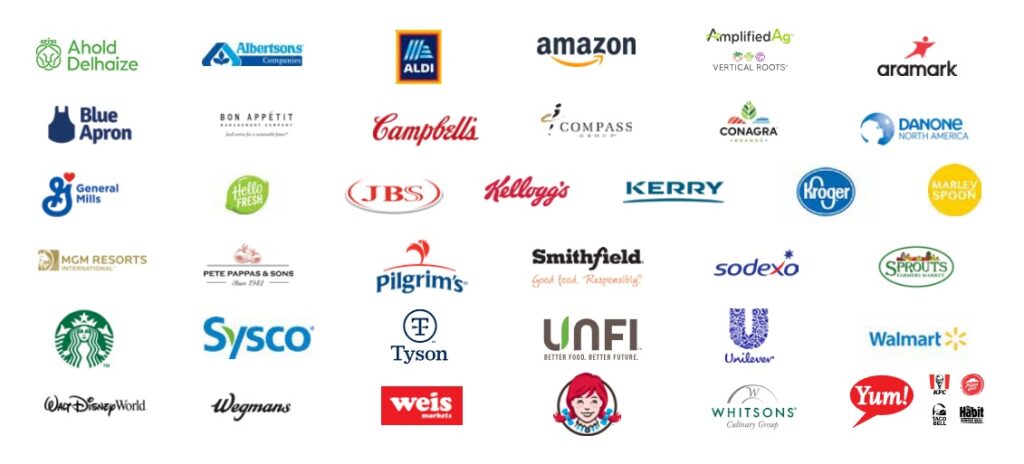EPA steps up messaging on 20% waste burden from food
The United States Environmental Protection Agency (EPA) estimates that food waste accounts for 20% of the waste that Americans generate. When this goes into the landfill it releases methane which is a powerful greenhouse gas and – alongside carbon dioxide – is warming the atmosphere.
The agency has developed a webpage focused on the sustainable management of food which includes a section for businesses and organisations. It includes the latest on the U.S. Food Loss and Waste 2030 Champions campaign, first launched by the USDA and EPA in 2016.
These ‘champions’ are businesses that have made a public commitment to reduce food loss and waste in their own operations by 50% by 2030. Major corporations and food brands have signed up including Ahold Delhaize USA, Compass Group, Danone North America, Kellogg’s, Starbucks, Tyson Foods, and Walmart. Their work to date to reduce food waste can be seen here.

Preventative measures
The page also offers businesses advice on preventing and diverting wasted food, and the benefits of anaerobic digestion. The latter process is a natural one in where microorganisms break down organic materials (ie coming from plants or animals) in an environment that has not oxygen.
Food and agri businesses can put a variety of products into digesters including:
- Animal manures
- Food scraps
- Fats, oils, and greases
- Industrial organic residuals
- Sewage sludge (biosolids).
The material left after anaerobic digestion, called the digestate, is a wet mixture that is usually separated into a solid and a liquid. It is rich in nutrients and can be used as fertilizer for crops while the biogas (methane and CO2) generated during the digestion process, is regarded as a renewable energy source.
Sense of urgency
At the U.S. Environmental Protection Agency, administrator Micheal Regan said: “We’re moving with a sense of urgency to fight climate change. Food is the common material found in our landfills and EPA estimates that food waste represents more than 20% of the trash that Americans generate. Nearly 8% of global greenhouse gas emissions come from food loss and waste.”
Regan added in a video (see below) that addressing food waste would curb carbon emissions, prevent resource losses, and improve access to nutritious food. As well as working with other government bodies like the USDA, Regan also said that he “recognised the role that public and private partnerships can play”, one reason for doubling down on its messaging this summer.
While wasted food has been a growing problem in consumer societies, it also offers some untapped opportunities. In pre-Covid 2019, EPA estimates that about 66 million tons of wasted food were generated in the food retail, food service, and residential sectors, and that most of this waste (60%) was sent to landfills. This is estimated to be more than any other single material in everyday waste, constituting 24% of the amount landfilled and 22% of the amount combusted in 2018.
Funding support of $4 billion
To help bring those shares down EPA offers various funding opportunities for reducing wasted food including grants. Each year the agency awards more than $4 billion in grant funding and other assistance agreements. They are available for small non-profit organisations all the way up to large state governments as an incentive to achieving individual business, and national, environmental goals.
A major programme is the 2023-2024 EPA Small Business Innovation Research (SBIR) solicitation for which applications will close on 23 August. To qualify, the agency seeks proposals from small businesses to develop novel environmental technologies in three key areas as follows:
- Innovative technologies that help consumers prevent food waste in the acquisition, preparation, and storage of food
- Innovative technologies or materials that will improve the recycling system
- Innovative material reduction and reuse solutions to lower embodied carbon in the built environment.
The 2023-2024 programme is more specific, however, covering topics such as clean and safe water; air quality and climate; Land; homeland security; circular economy/sustainable materials; and safer chemicals. The slides from an information webinar covering these topics can be viewed here.
[Lead image courtesy of Jas-min via Unsplash.]
Join us at SIAL Paris as exhibitor Join us at SIAL Paris as visitor
